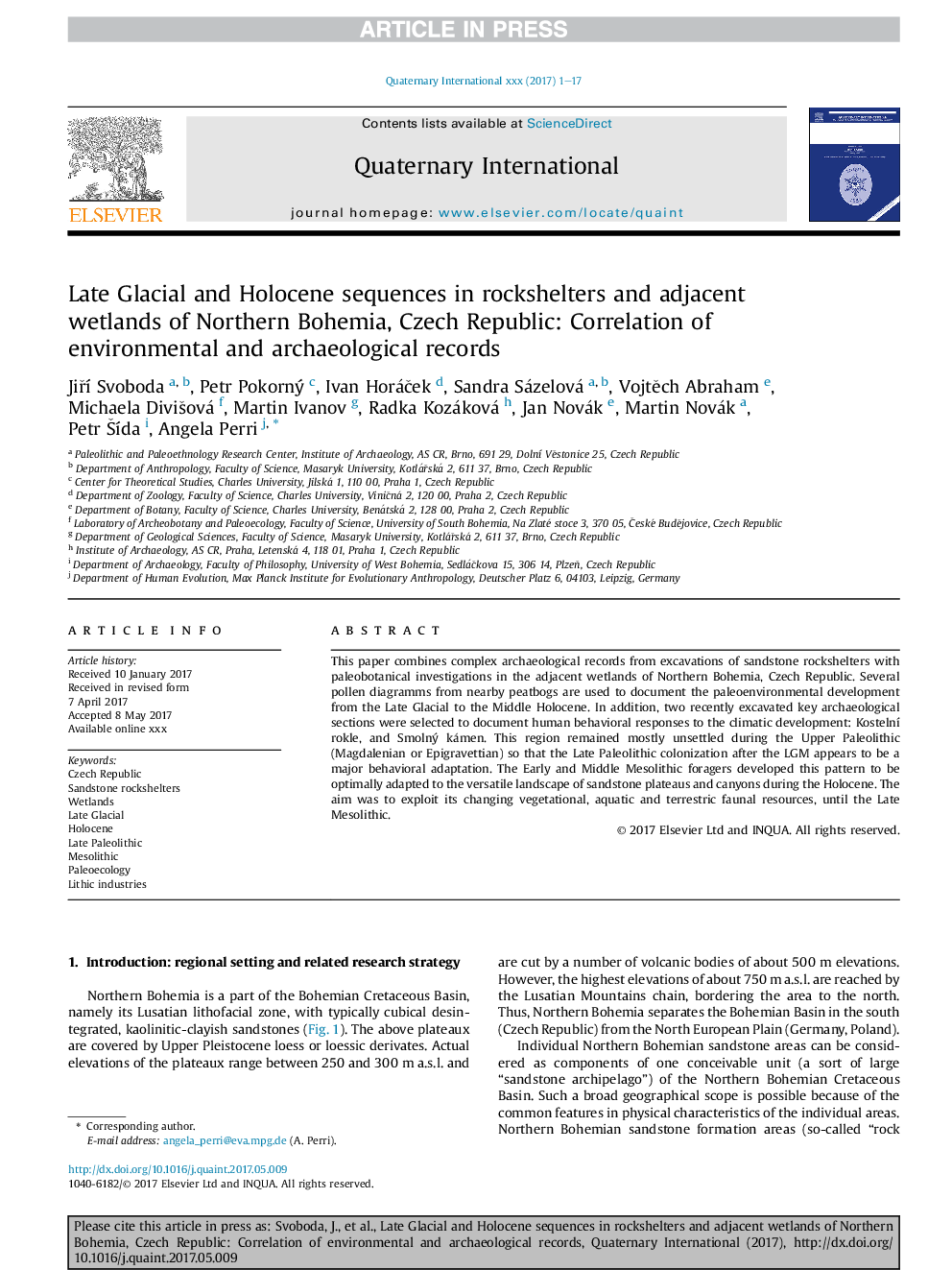| Article ID | Journal | Published Year | Pages | File Type |
|---|---|---|---|---|
| 7450761 | Quaternary International | 2018 | 17 Pages |
Abstract
This paper combines complex archaeological records from excavations of sandstone rockshelters with paleobotanical investigations in the adjacent wetlands of Northern Bohemia, Czech Republic. Several pollen diagramms from nearby peatbogs are used to document the paleoenvironmental development from the Late Glacial to the Middle Holocene. In addition, two recently excavated key archaeological sections were selected to document human behavioral responses to the climatic development: Kostelnà rokle, and Smolný kámen. This region remained mostly unsettled during the Upper Paleolithic (Magdalenian or Epigravettian) so that the Late Paleolithic colonization after the LGM appears to be a major behavioral adaptation. The Early and Middle Mesolithic foragers developed this pattern to be optimally adapted to the versatile landscape of sandstone plateaus and canyons during the Holocene. The aim was to exploit its changing vegetational, aquatic and terrestric faunal resources, until the Late Mesolithic.
Keywords
Related Topics
Physical Sciences and Engineering
Earth and Planetary Sciences
Geology
Authors
JiÅà Svoboda, Petr Pokorný, Ivan HoráÄek, Sandra Sázelová, VojtÄch Abraham, Michaela DiviÅ¡ová, Martin Ivanov, Radka Kozáková, Jan Novák, Martin Novák, Petr Å Ãda, Angela Perri,
